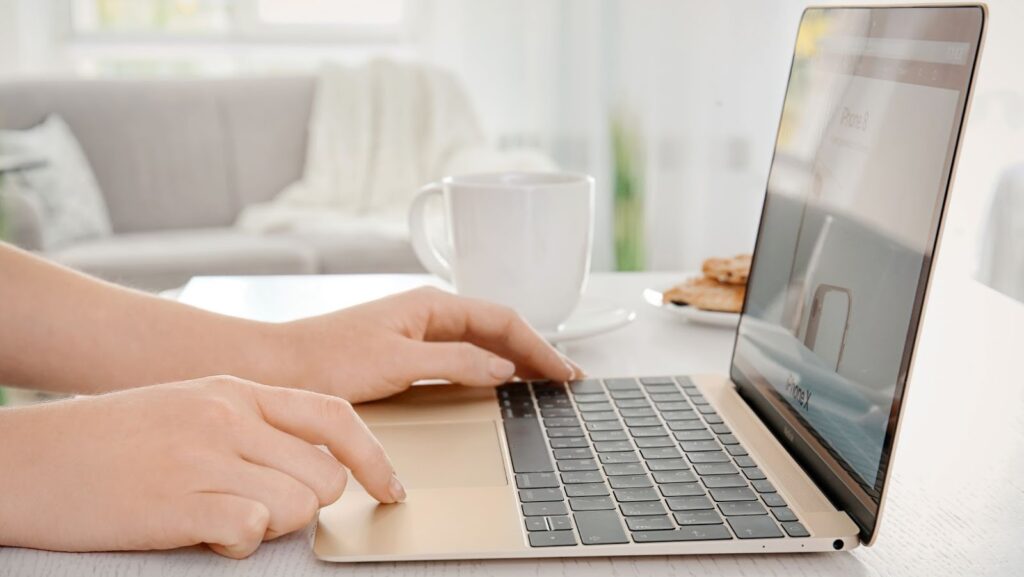One of the great things about Macs is that they come with a variety of language support built-in. This means you can easily change the keyboard language to type in another language, without having to install any extra software.
There are two ways to change the keyboard language on a Mac:
In System Preferences:
1. Go to the Apple menu in the top-left of your screen and select System Preferences.
2. Click on Keyboard, then click on Input Sources.
3. Select the language you want to use from the list on the left, then check the box next to Enable keyboard layouts in that language.
4. Close System Preferences when you’re finished.
In the menu bar:
1. Click on the flag icon in the menu bar and select the language you want to use from the list.
2. This will change the keyboard layout for all applications, not just individual ones like before.
To switch back to your original keyboard layout, just follow the steps again and select the language you want to use.
That’s all there is to it! Now you can easily change the keyboard language on your Mac whenever you need to.
BACKGROUND
A keyboard language allows you to use a different layout for your keyboard, which can be useful if you need to type in multiple languages or if you simply want to change the look of your keyboard. You can set up multiple keyboard languages on your Mac and switch between them as needed. In this article, we’ll show you how to add and remove keyboard languages on a Mac, as well as how to change the default language and keyboard layout.
Adding a Keyboard Language
To add a new keyboard language on your Mac:
1. Open System Preferences and click on “Keyboard”.
2. Click on the “Input Sources” tab.
3. Click on the “+” button to add a new keyboard language.
4. Select the desired keyboard language from the list and click “Add”.
5. The new keyboard language will now be listed under “Input Sources”. You can check the “Show Input menu in menu bar” box to have quick access to your different keyboard languages from the menu bar.
Changing the Default Language
If you want to change the default keyboard language on your Mac:
1. Open System Preferences and click on “Language & Region”.
2. Click on the “Preferred languages” tab.
3. Drag your desired language to the top of the list. This will make it the new default language.
4. The new default keyboard language will now be applied system-wide.
Changing the Keyboard Layout
If you want to change the keyboard layout for a specific keyboard language:
1. Open System Preferences and click on “Keyboard”.
2. Click on the “Input Sources” tab.
3. Select the keyboard language for which you want to change the layout.
4. Click on the “Layout” drop-down menu and select the desired keyboard layout.
5. The new keyboard layout will now be applied to the selected keyboard language.
Removing a Keyboard Language
If you want to remove a keyboard language from your Mac:
1. Open System Preferences and click on “Keyboard”.
2. Click on the “Input Sources” tab.
3. Select the keyboard language you want to remove and click on the “-” button.
4. The selected keyboard language will now be removed from your list of available languages.
How to change language on macbook
If you want to change the language on your MacBook Air, you can do so in the System Preferences. To access the System Preferences, click on the Apple logo in the top left corner of your screen and then select “System Preferences.”
In the System Preferences, click on “Language & Region” and then select your desired language from the “Preferred languages” list. The new language will be applied system-wide.
If you want to change the keyboard layout for a specific keyboard language, you can do so by selecting the keyboard language in the “Input Sources” tab and then choosing the desired layout from the “Layout” drop-down menu.
CONCLUSION
In this article, we’ve shown you how to add, remove, and change keyboard languages on a Mac. We hope this has been helpful


More Stories
From Sketch to Masterpiece: The Power of Image-to-Image AI Tools
Instructions for Bangladeshi Users on How to Install the MCW App
What is the concept of zooming